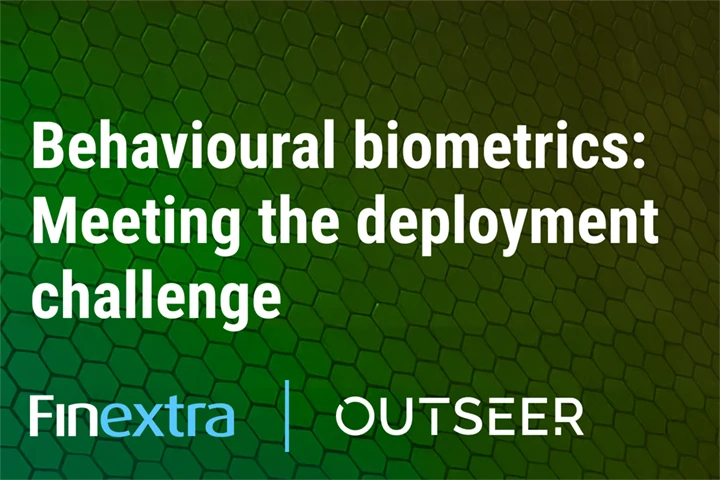We discuss what a fraud risk assessment is and how it helps organizations detect vulnerabilities and proactively protect themselves from fraudulent transactions and activities.
What Is a Fraud Risk Assessment?
A fraud risk assessment is a process for identifying an organization’s exposure to fraud and developing a plan to mitigate that risk before it does financial, reputational, or legal damage.
These assessments help companies understand their vulnerabilities so they can deploy countermeasures that align with their business objectives and protect against the growing scourge of fraud.
According to The Economist, new technologies have enabled cybercrime at an industrial scale.
Last year, fraud losses in the U.S. surged 70% over levels seen in 2020, according to the Federal Trade Commission. As much as 50% of digital fraud can be traced back to organized crime rings that can show a level of sophistication that requires expertise in AI-enabled analytics, automation and all the capabilities of any modern enterprise.
Card-not-present fraud alone may top $408.5 billion in annual losses worldwide by 2030. Account takeover (ATO) fueled by data breaches increased 850% between Q2 2020 and Q2 2021. And account enrollment involving synthetic identities are already a $6 billion problem the FBI calls one of the fast-growing financial crimes. Only 5% to 15% of the perpetrators are every caught.
Increasingly supported by nation-states, fraud is increasingly linked to global crime rings, human traffickers, and terrorist groups.
In a rapidly-evolving threat environment like this, ongoing fraud risk assessments may be crucial to uncovering exposure to evolving fraud risks to protect businesses from significant financial loss and data theft.
How Does a Fraud Risk Assessment Work?
Fraud risk assessments are tailored for an organization’s industry, risk tolerance, and overall operational needs. The assessment is typically performed by the heads of each department or by an outside auditor.
Each manager conducts their own assessment within their department, highlighting different aspects of fraud risk. There are multiple components to these reports, which should all include the following:
- Descriptions of fraud risk: Details where the fraud takes place, who is involved, and how it can happen.
- Responsible party: The person in charge of implementing anti-fraud and risk mitigation efforts.
- Significance to the organization: Outlines the consequences of fraud for this system, including potential data and financial loss and how it impacts the organization overall.
- Likelihood of occurrence: The frequency of each type of fraud.
- Existing anti-fraud measures: Records and documents any anti-fraud measures in place and how those tools detect or prevent fraud attempts.
- Ongoing monitoring actions: Establishes monitoring activities by type and schedule.
Once this information has been collected, managers from all departments typically report their findings to their board of directors. This allows the organization to design preventive measures and deploy defensive controls based on likelihood, significance, and risk tolerance.
What Should a Fraud Risk Assessment Cover?
Fraud risk assessment should cover four key areas:
- Regulatory Compliance
- Financial and Non-Financial Reporting
- Asset Misappropriation
- Illegal Acts
Let’s explore each area in a bit more detail.
Regulatory Compliance
Auditors should examine how well an organization complies with its industry’s regulatory standards. This should not only examine if compliance is being met, but also how thoroughly staff is at performing their duties.
Organizations will often verify their compliance through self-assessments. Examine the accuracy of these assessments to ensure that auditing tools are working properly and that employees are making a genuine effort to meet standards.
Financial and Non-Financial Reporting
Auditors should look for inconsistencies that could indicate fraud and then verify claims of revenue, profits, and expenses. This fraud typically happens at the management level where numbers are tweaked to understate losses and liabilities while exaggerating profits and performance.
Non-financial indicators can also be misrepresented to make organizations seem larger or to hide embezzlement activity. Non-financial indicators can include a number of customer accounts, leads generated, and employees hired.
Asset Misappropriation
Company equipment, lines of credit, inventory, and cash can all fall prey to misappropriation. This can range from outright theft and embezzlement to employees using company assets for personal use.
Auditors should look for signs of missing equipment and inventory as well as inconsistencies across financial records and accounts.
Illegal Acts
Illegal acts cover any type of fraud not described above. This can include data theft via spyware or other illegal activity that puts the company at risk. It’s important for auditors to be able to read between the lines and identify the indicators of fraud.
How to Conduct a Fraud Risk Assessment
The time it takes to conduct a fraud risk assessment will vary depending on your organization’s size and how many auditors you have in place. Typically, organizations conduct fraud risk assessments semiannually or when large changes occur across systems, departments, or processes.
Below are five steps you can take to conduct your own fraud risk assessment:
- Identify and Document Risks
Work to uncover both internal and external fraud risks across the organization. It’s best to work with the heads of each department as they have a deep knowledge of their department’s processes, tools, and habits.
Internal risks can include the following:
- Mismanagement of funds
- Employees failing to perform proper compliance self-assessments
- Misuse of company equipment and inventory
- Improper record keeping
External risks can include the following:
- Failing to scan for fraud among your customer base
- A lack of account takeover protection
- The inability to detect and prevent fraudulent purchases
- Unsecure systems that are vulnerable to cyberattack
- Weigh Risks by Probability and Severity
Weigh your risk based on the likelihood of occurrence and potential impact on your organization. Spreadsheets can help keep data organized as you quantify your results. A probability and severity matrix can help your team organize risks and prioritize them quickly.
When calculating the likelihood of a risk, consider how many times the risk can occur and how pervasive it is across your company. When measuring impact examine the financial losses that can occur, as well as the consequences from civil, criminal, and regulatory liabilities.
- Mitigate and Resolve
Once a prioritized list of risks has been created, it’s time to take action. Decide what actions are needed and who will be responsible for carrying them out. Each organization will have its own unique level of risk tolerance that balances cost and assumed risks.
In some cases, risk can be avoided altogether by stopping a service or terminating a high risk or reward program. In other cases, risk can be mitigated by improving policies and procedures and establishing checks and balances.
Fraud prevention systems can speed up data collection during a risk assessment and proactively perform risk mitigation and resolutions across an organization. These systems work by continuously monitoring user behavior and comparing that activity against known models of fraud.
- Monitor and Review
Fraud is continuously evolving to become less detectable and more impactful. Monitor your changes and perform a fraud investigation if you suspect fraud is adapting to your changes. Continuous monitoring helps not only spot new areas that need improvement but also uncover patterns that root out bigger problems within your organization.
- Report Risks
Report your findings objectively and identify a clear path between your risks and mitigation actions. Many times each department will come forward with its own fraud risk assessment. This data can be centralized into a single report to get an holistic view of an organization’s risk.
Outseer Simplifies Continuous Fraud Prevention
Conducting fraud risk assessments and maximizing their value to the organization and its customers is no small feat for card issuers, banks, payment processors, or merchants. Striking that right balance between security and customer experience can be as difficult as it is critical—especially at a time when legitimate many will bail after even 30-seconds of added friction.
But Outseer can help. Our payment and account monitoring solutions provide seamless fraud protection that defeats both fraud and friction at the same time. Through modern machine learning, data science, and shared intel from 20 billion annual transactions across 6,000 financial institutions worldwide, Outseer prevents 95% of all fraud loss, with intervention rates as low as 5%. That’s the best performance in the business—by far.
To learn how you can turn fraud risk assessments into fraud risk achievements, request a free demo today.












